| Creating the Farolitos Quilt Maybe because it was one of the last, this quilt took a more direct path than most. For a long time that page in the dummy had only the note, "Landscape look in the dark with lines of glowing distorted rectangles. Strip piecing? Create depth by using large farolitos in foreground and smaller in back." I found quite a few photographs of farolitos on the Internet. After looking at them, this was my first very rough computer sketch. |
All images and text © Anna Grossnickle Hines 2005
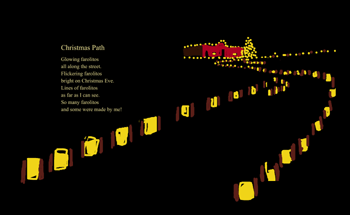
|
From there I added the lines and defined the shapes of the paper bag lanterns, the glow around them, and the building and tree in the background. The sky in some of the photographs inspired me to add the horizon line, which helped the design tremendously. |
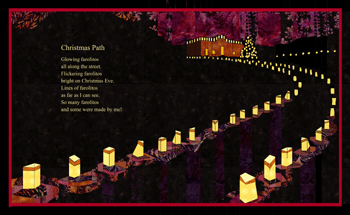
|
I put a dot of color in each lantern and the building to help me identify the parts, then as with the other strip-pieced quilts printed out the lines to use as a pattern. |
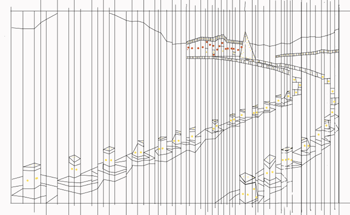
|
I traced the lines and color clues onto muslin then layered it with flannel batting and the black backing fabric and basted the three layers together. |
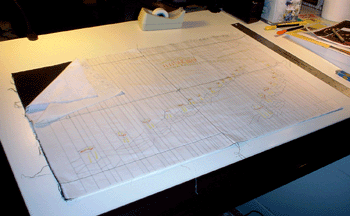
|
I also traced the lines and colors onto freezer paper which I would then cut apart and use as the foundation for my strips. I numbered each strip and also put clues for the colors of the glowing area around the farolitos, "D" for dark, "M" for medium or "L" for light. |
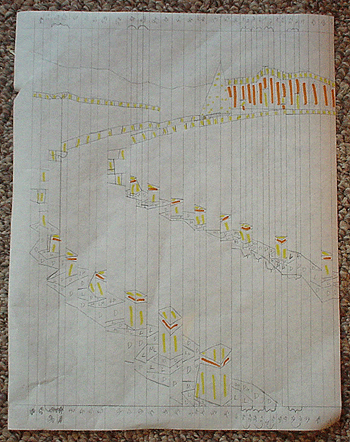
|
After sewing each strip I trimmed both seam allowances to one quarter inch. |

|
Matching the edges of the fabric and the lines on the paper strip to the lines on the muslin, and pinned and then stitched the strip onto the quilt, through both strips, the muslin, flannel and backing. I learned this quilt-as-you-go technique from Marge Edie in her books Bargello Quilts, and A New Slant on Bargello. I found that my strips lay flatter if I stitched from the middle to the top and then from the middle to the bottom. |
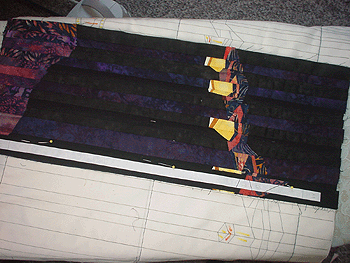
|
With strips this small precision is critical, so if I strayed from the line at all, I did rip and restitch, but all in all assembling this quilt went very smoothly. |

|
To make the very small farolitos in the background I sewed little strips of yellow and black which I then sewed into the vertical strips. |
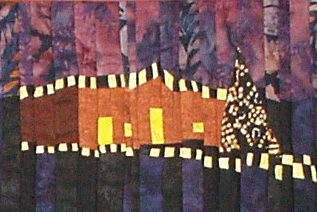
|
Fabrics do such wonderful things to simple designs. I like the dark patterned fabrics in place of the solid black, the kind of glow of the sky echoing the glow around the farolitos in the foreground. This quilt was a lot of fun to do. |
